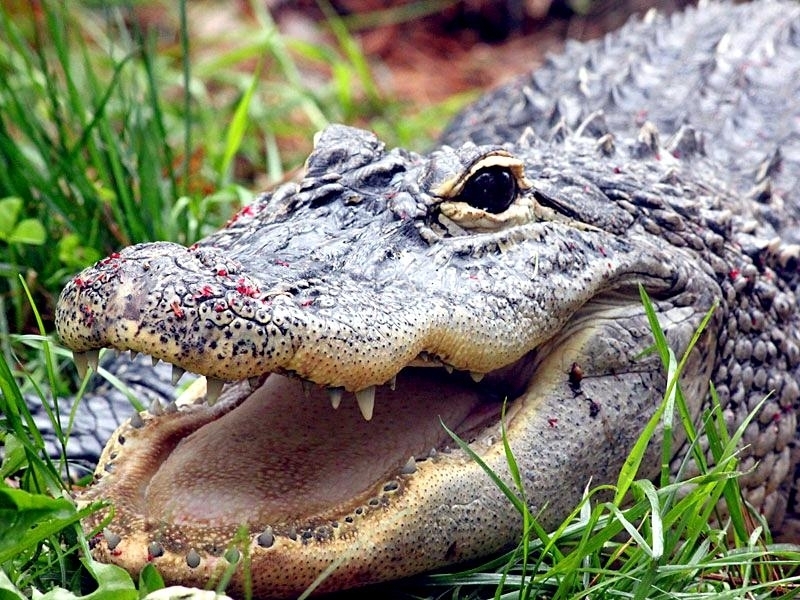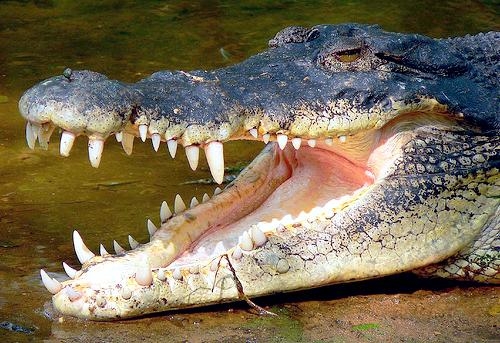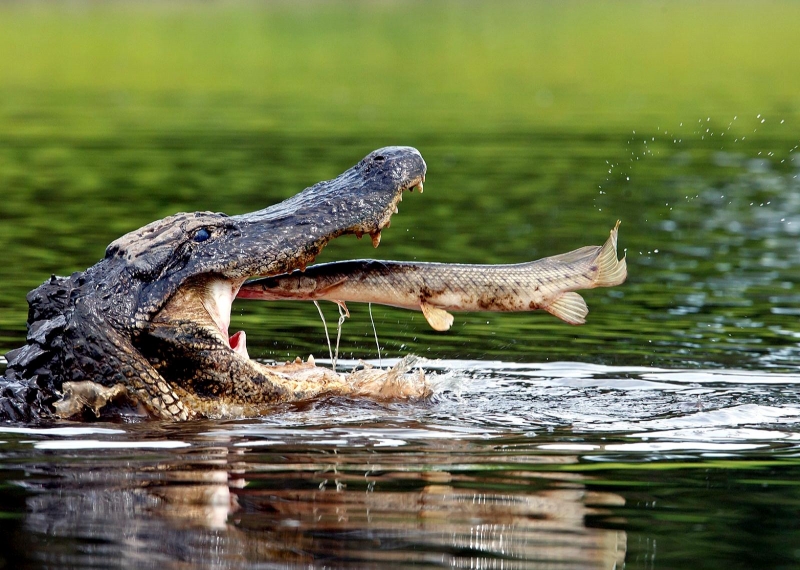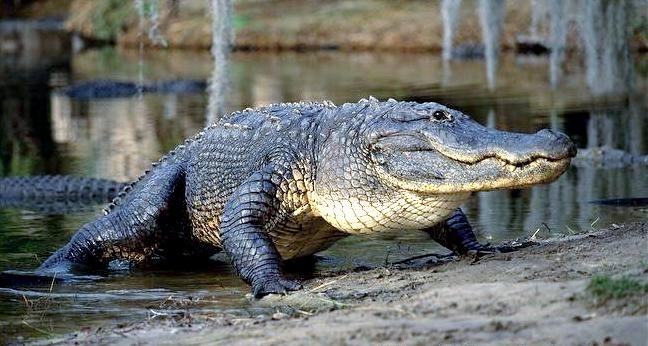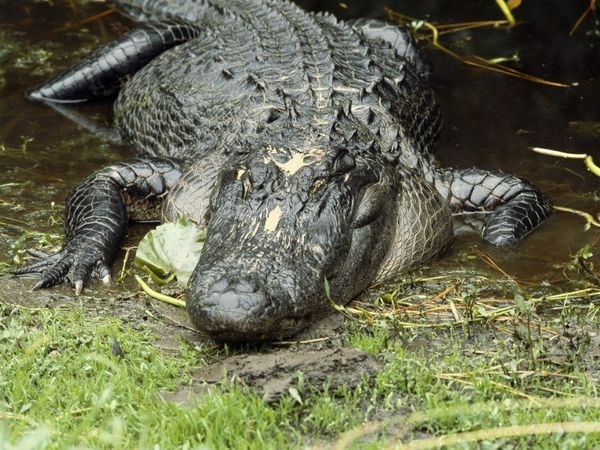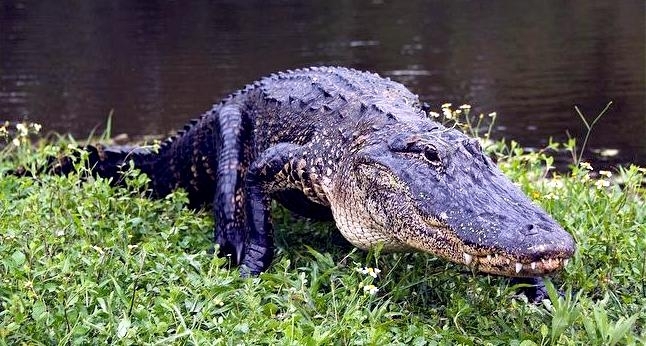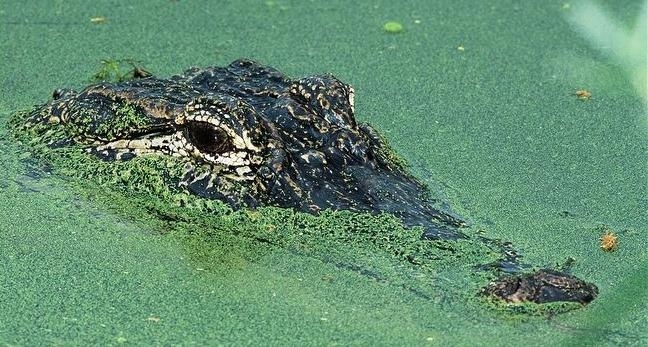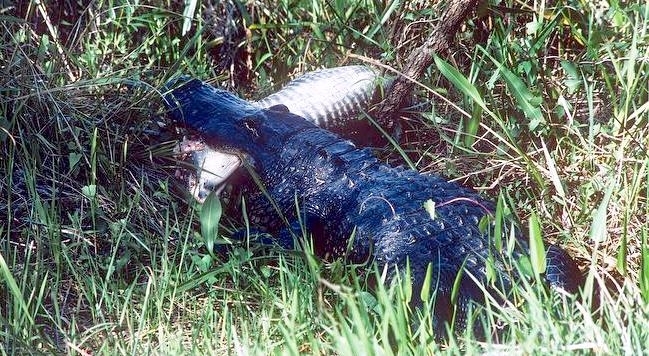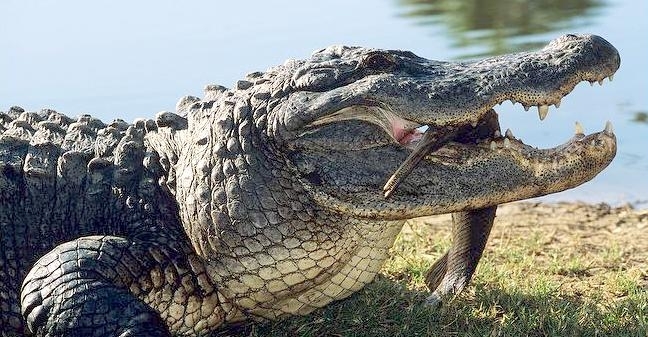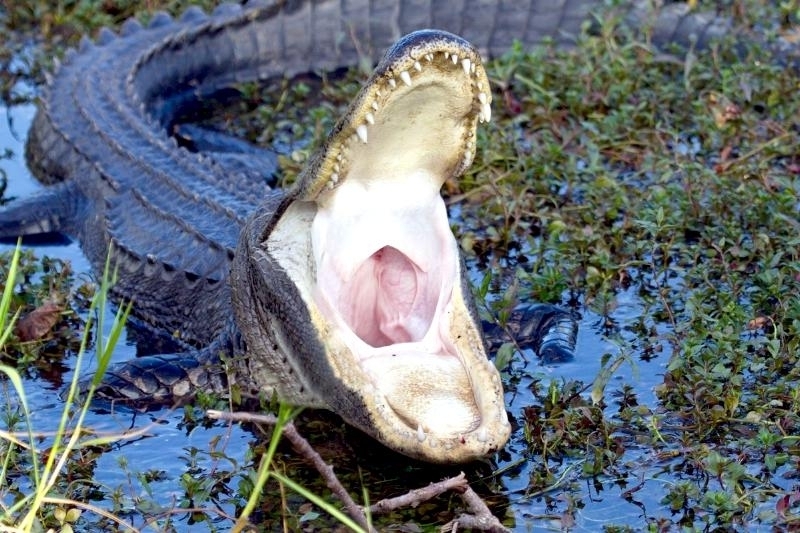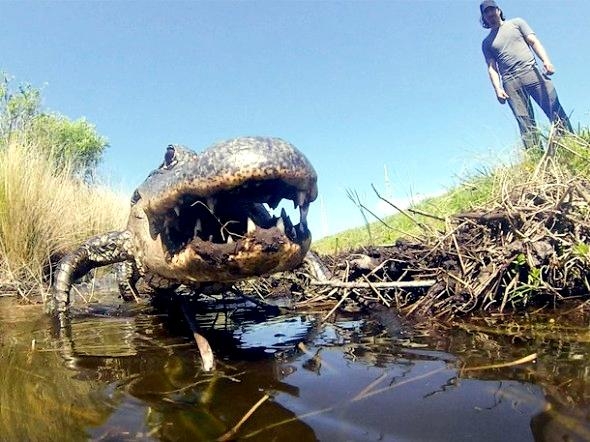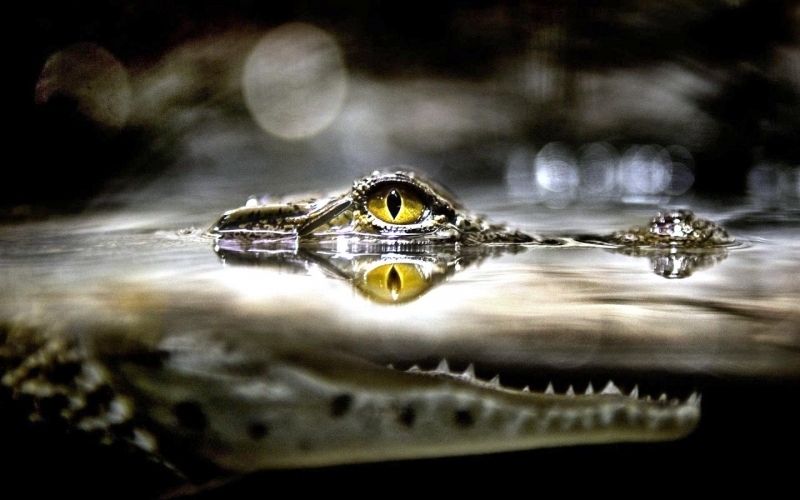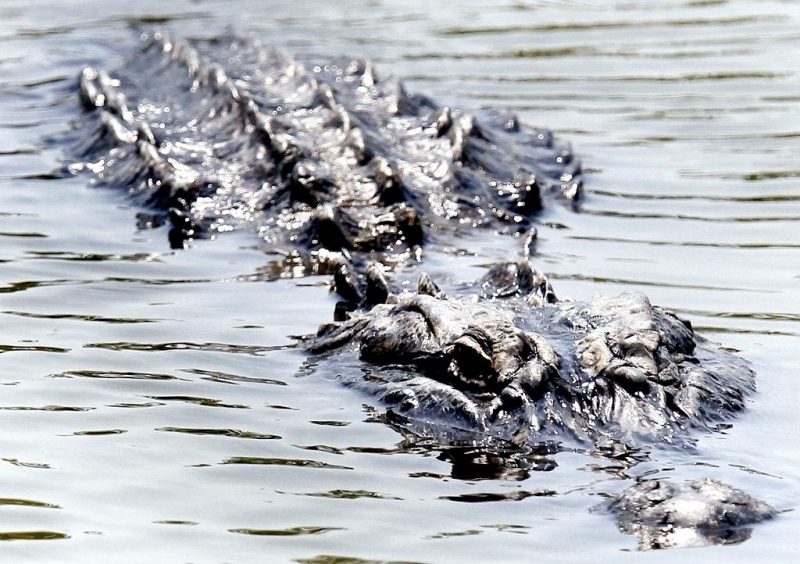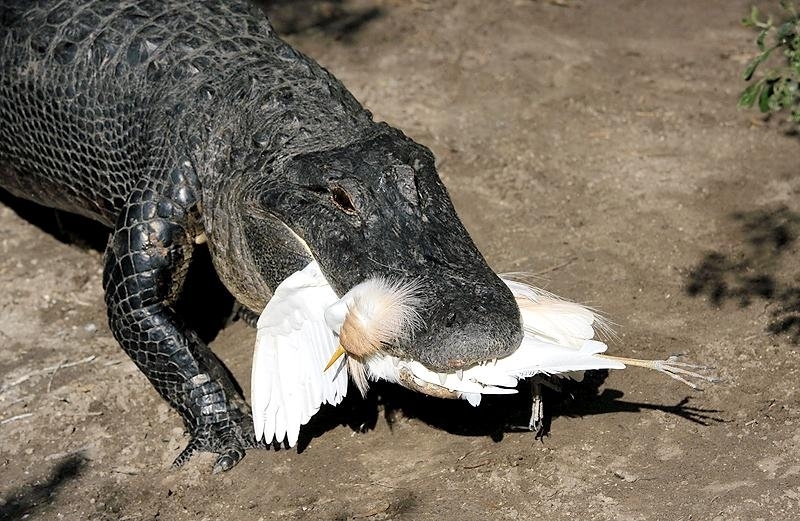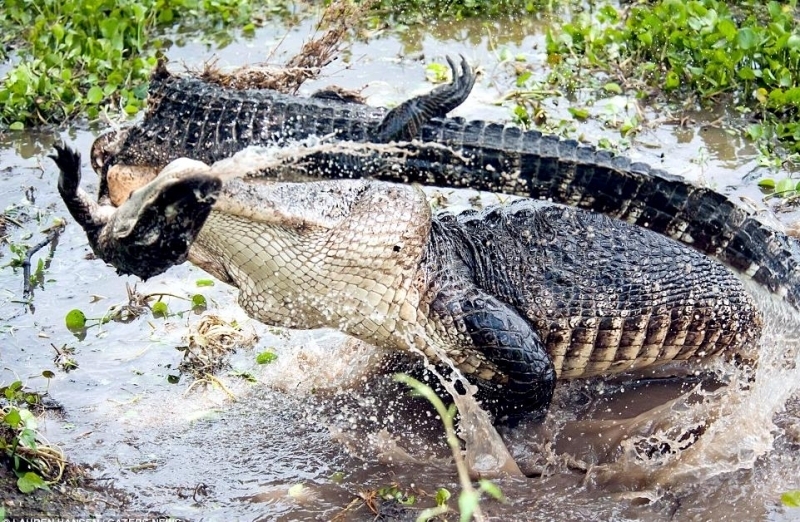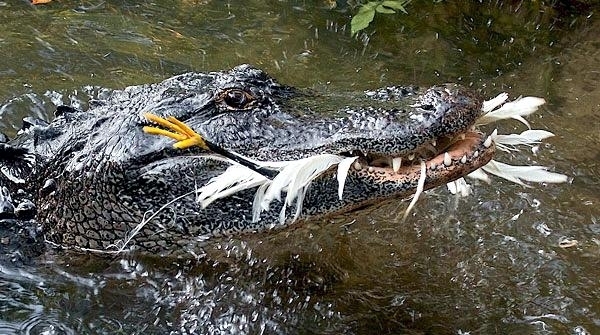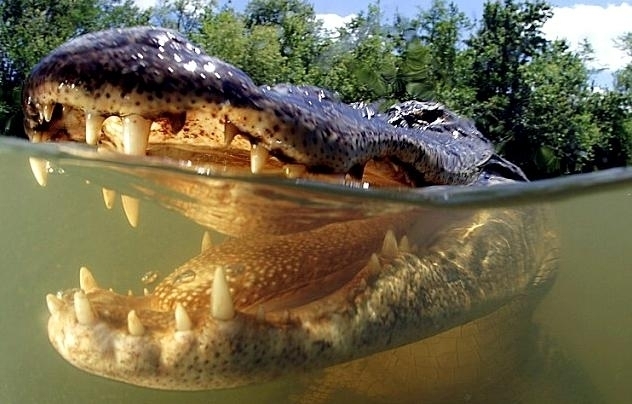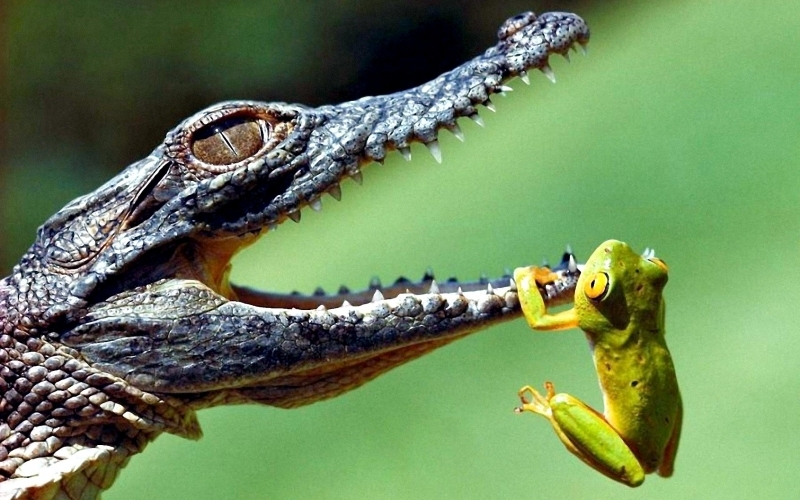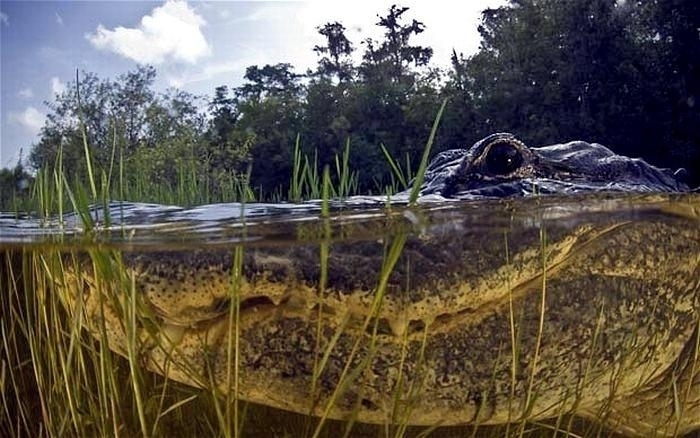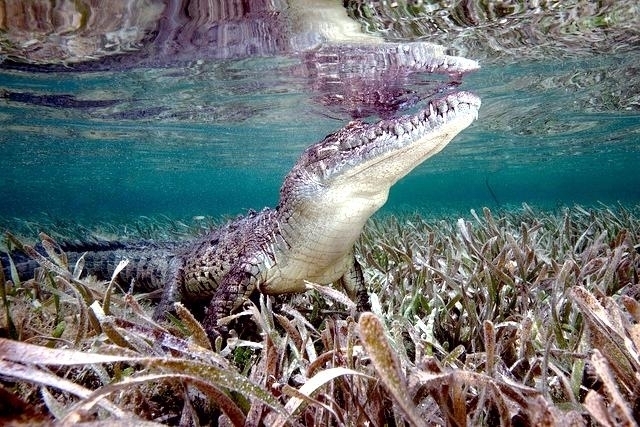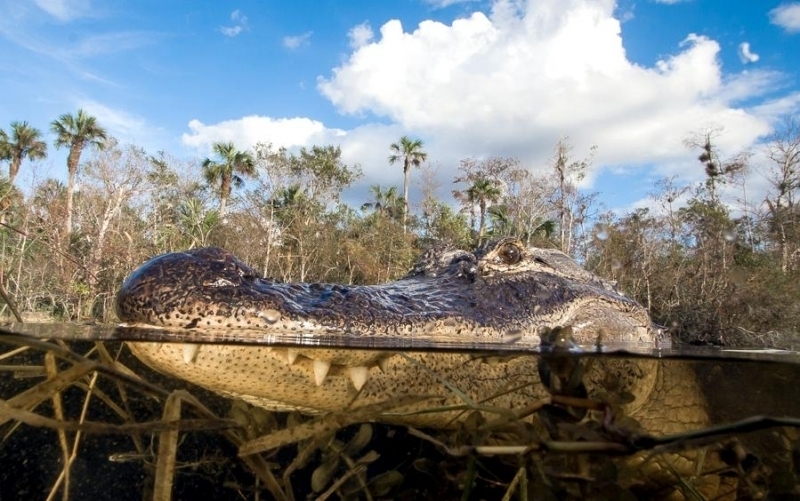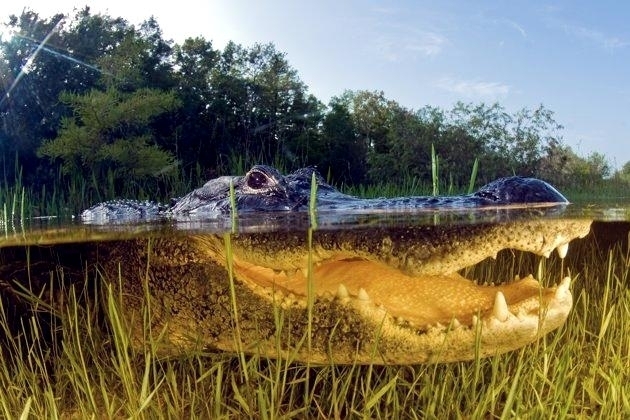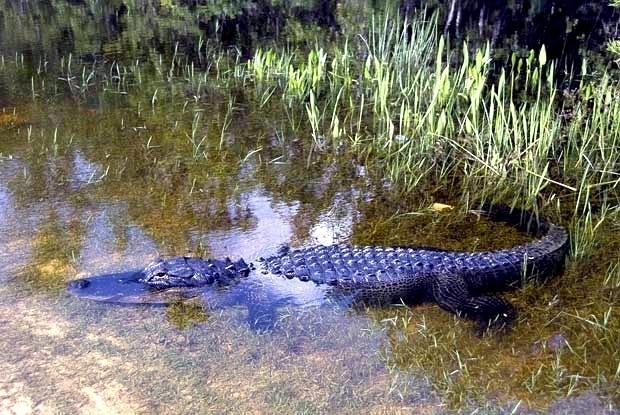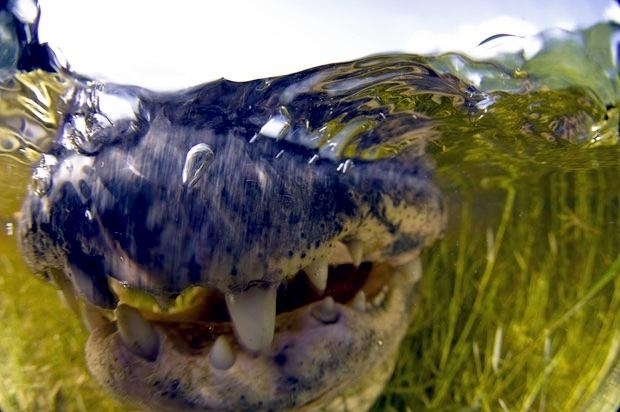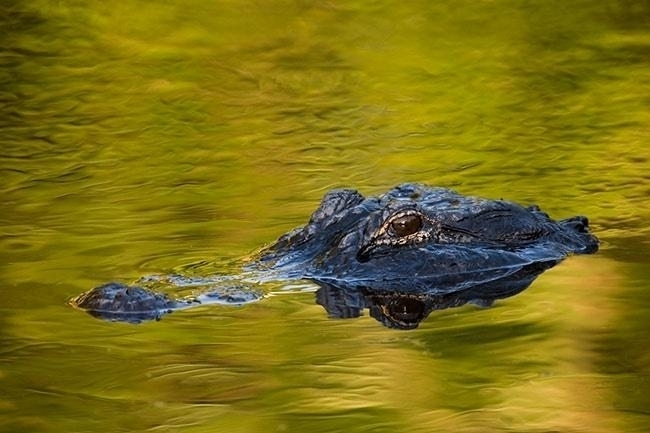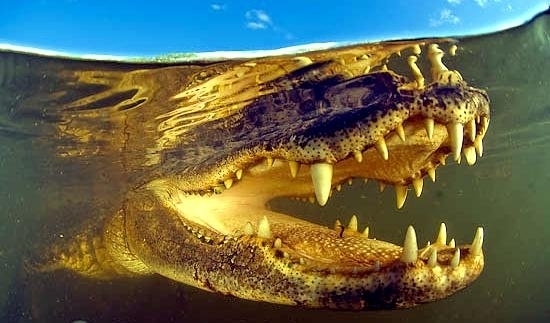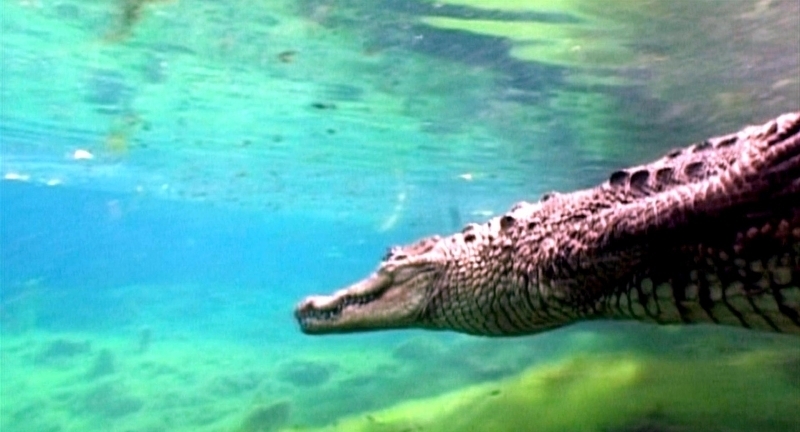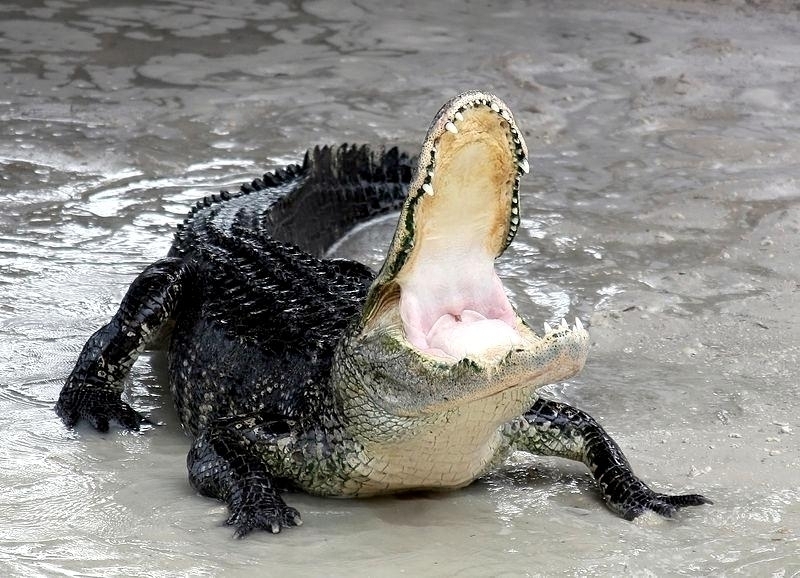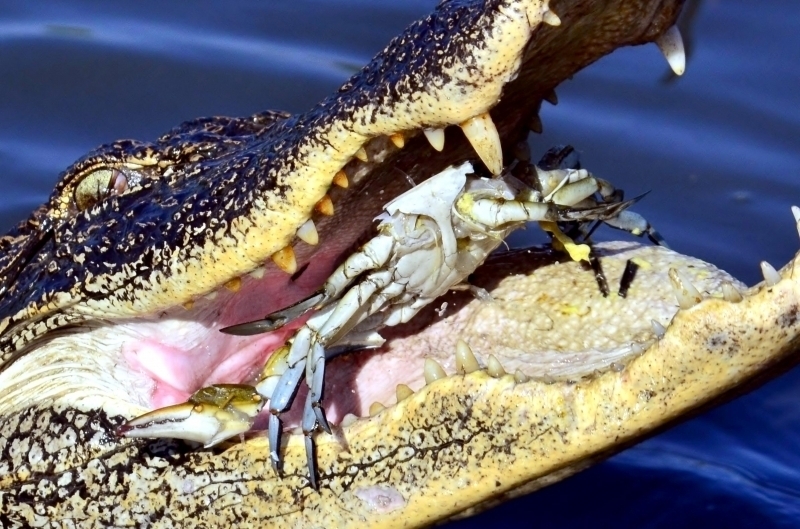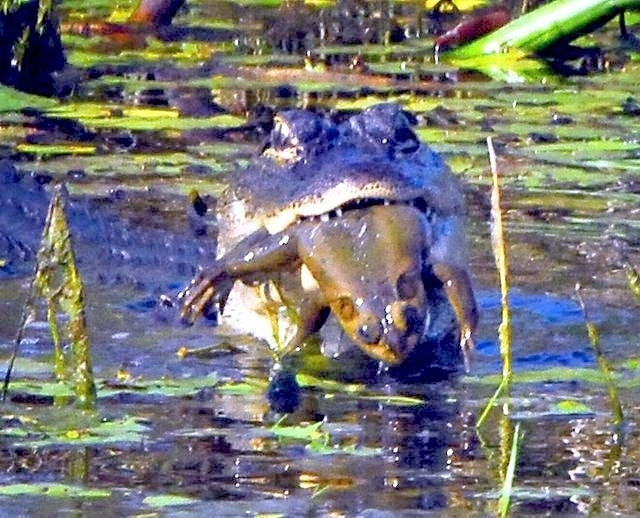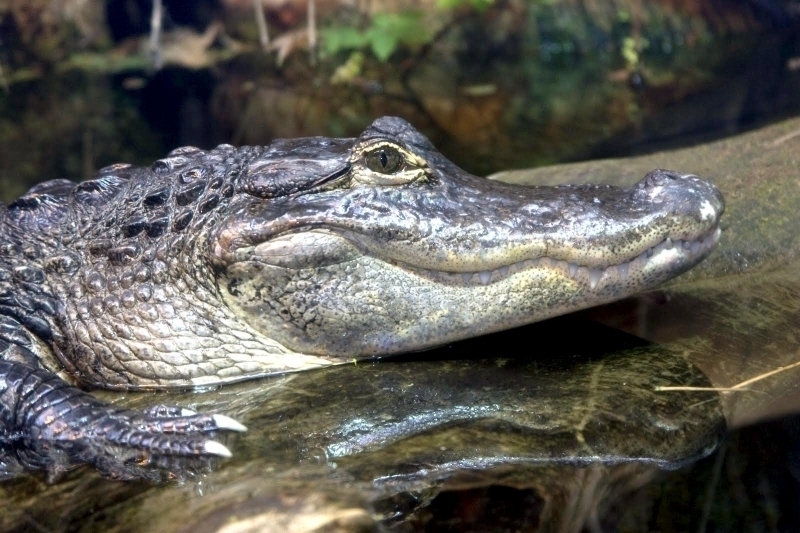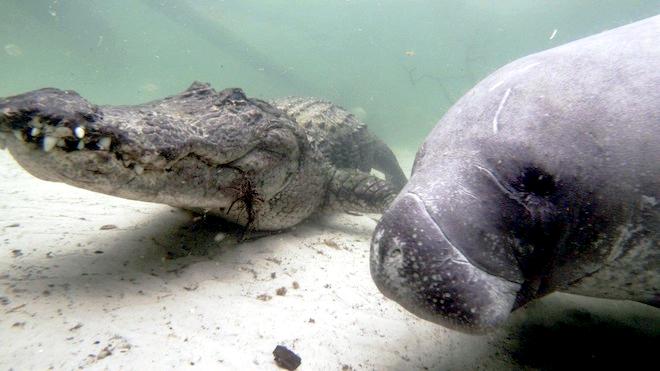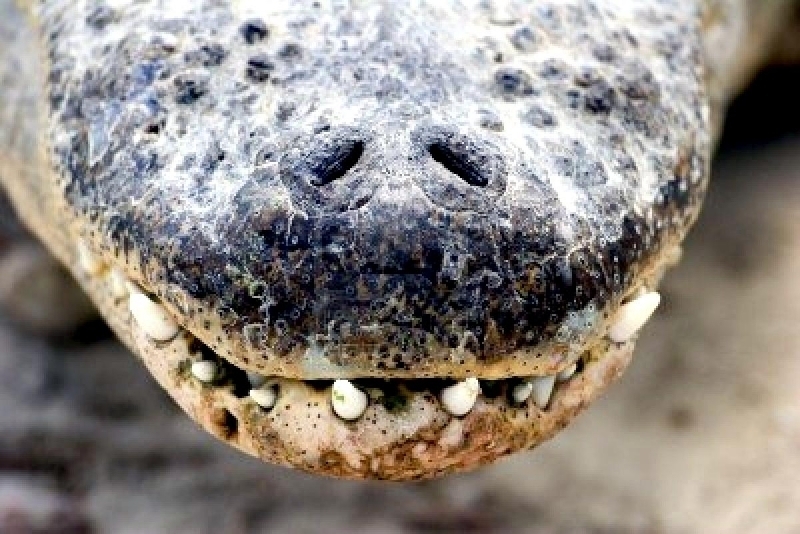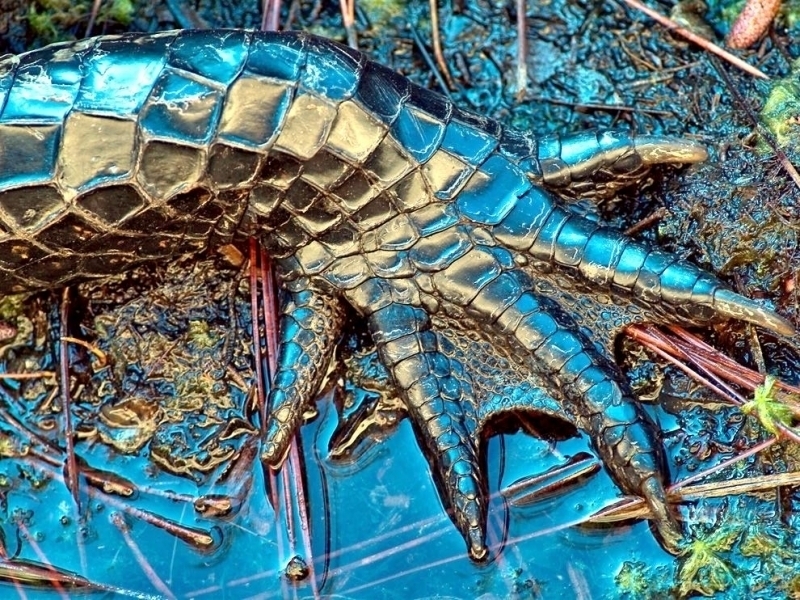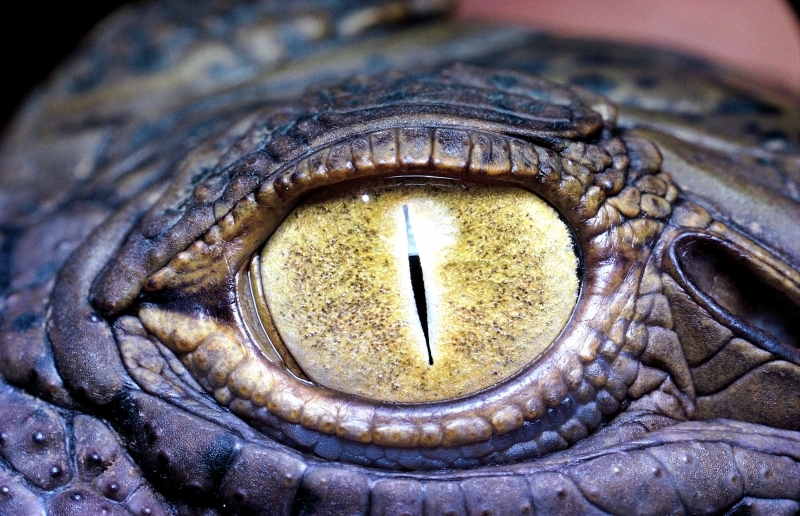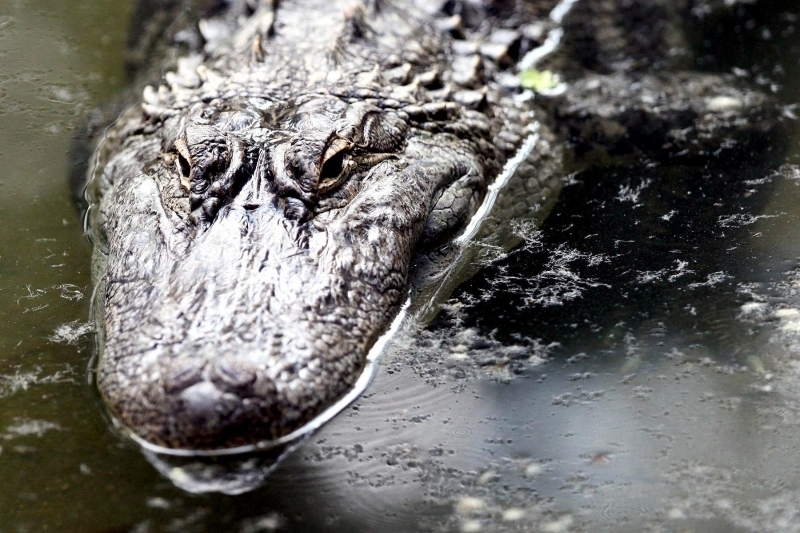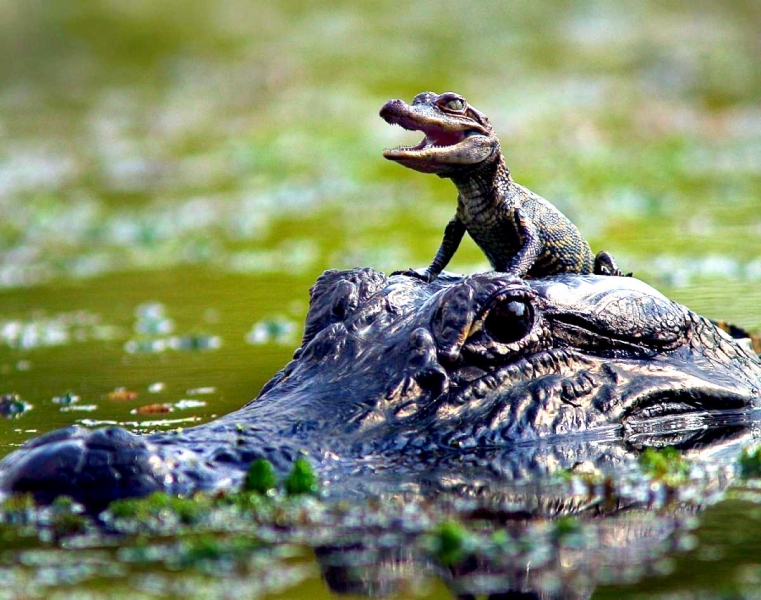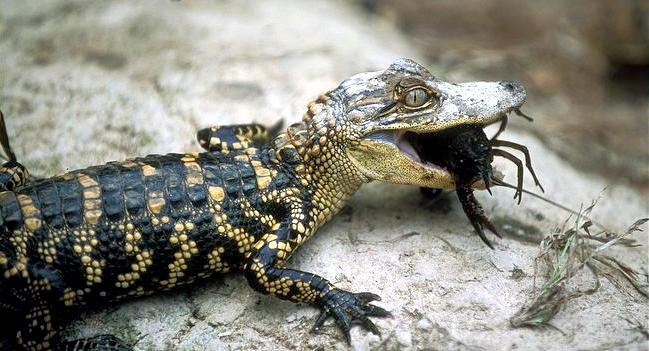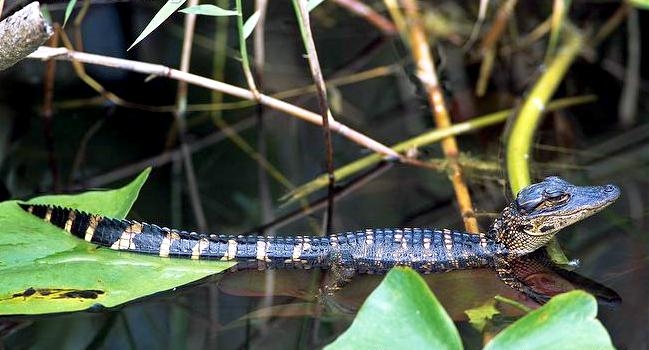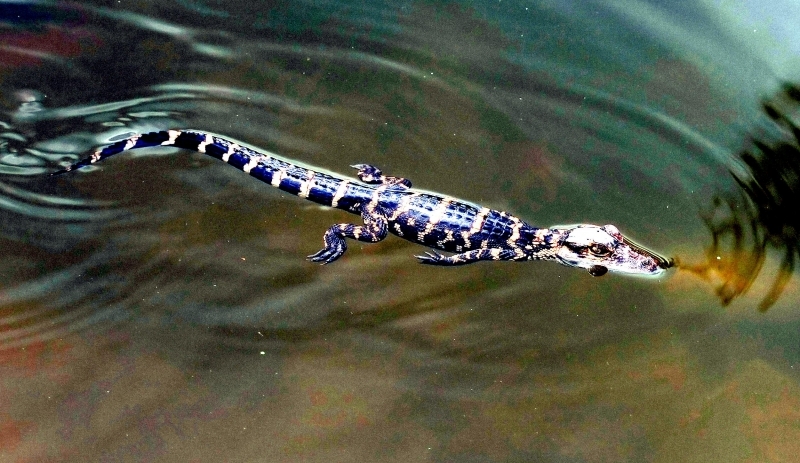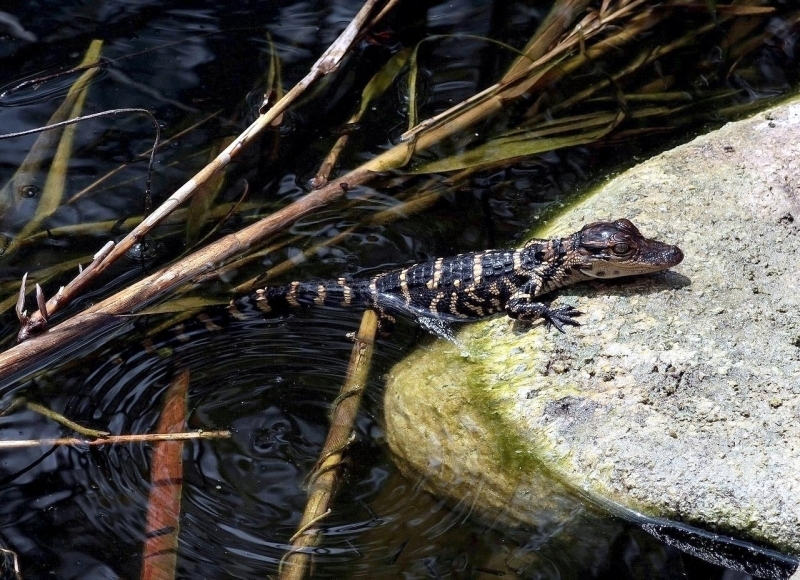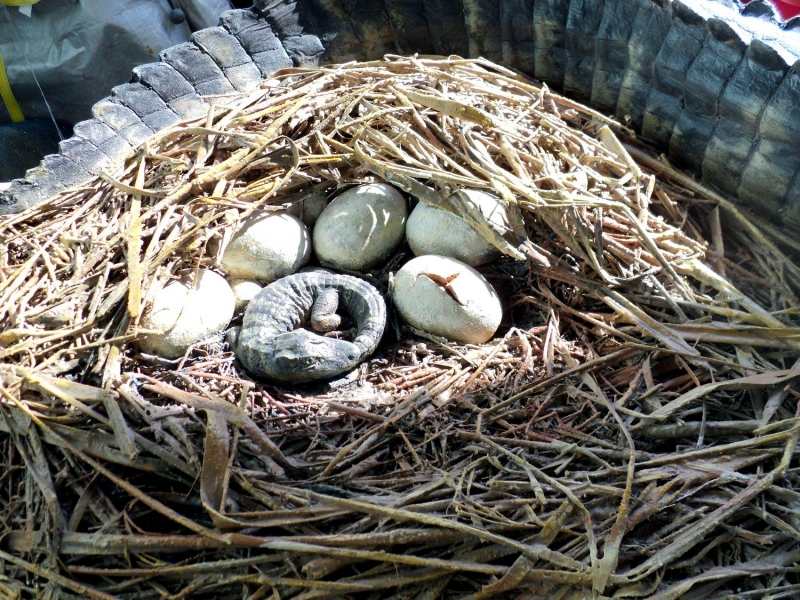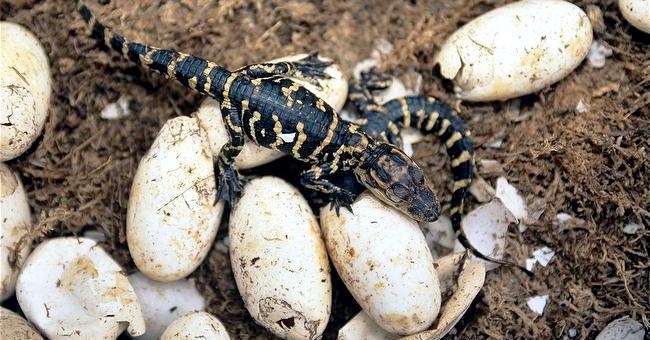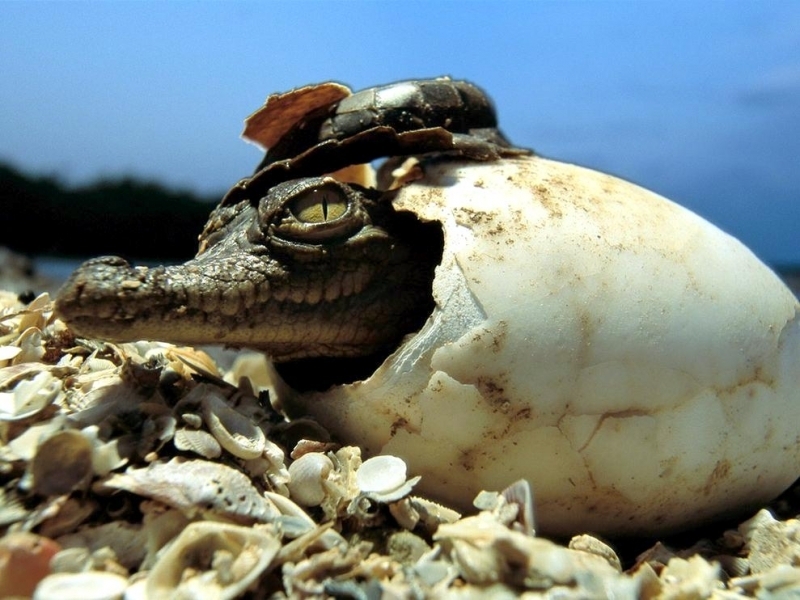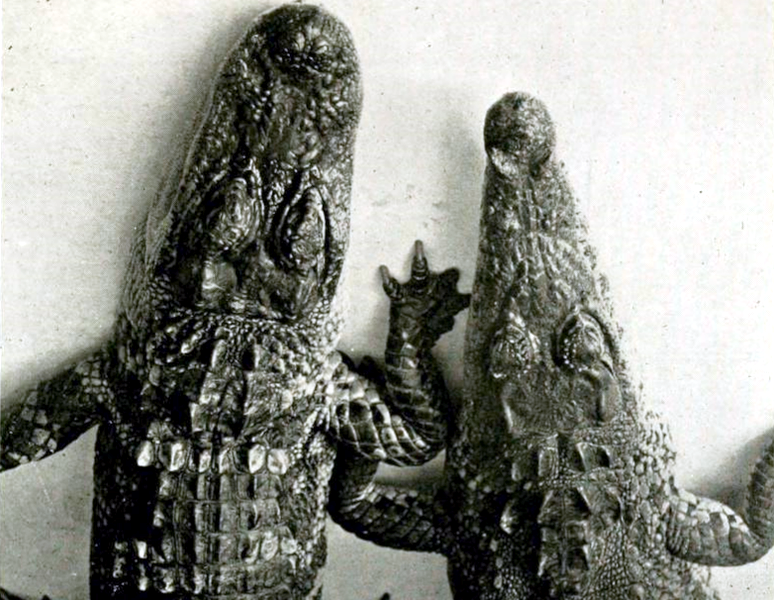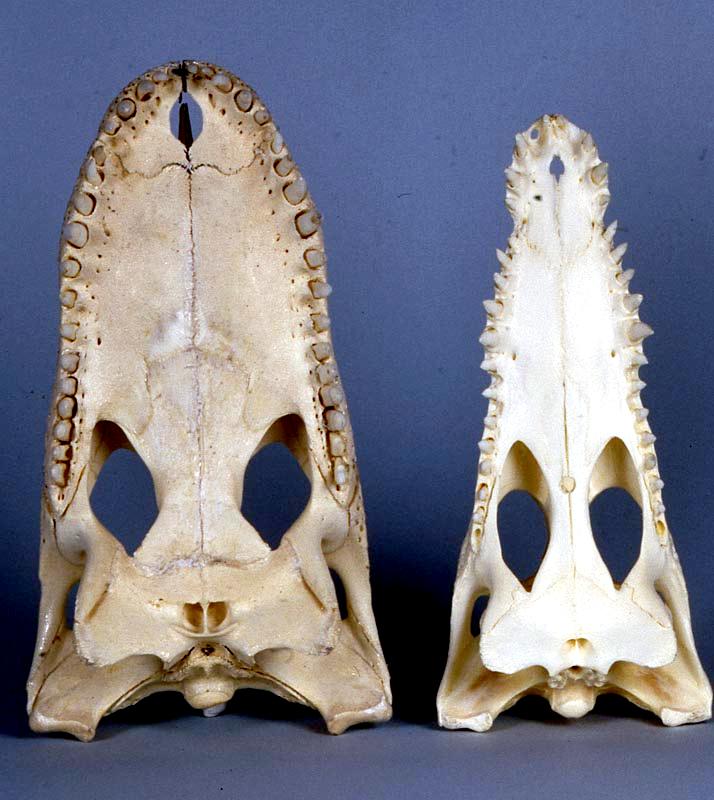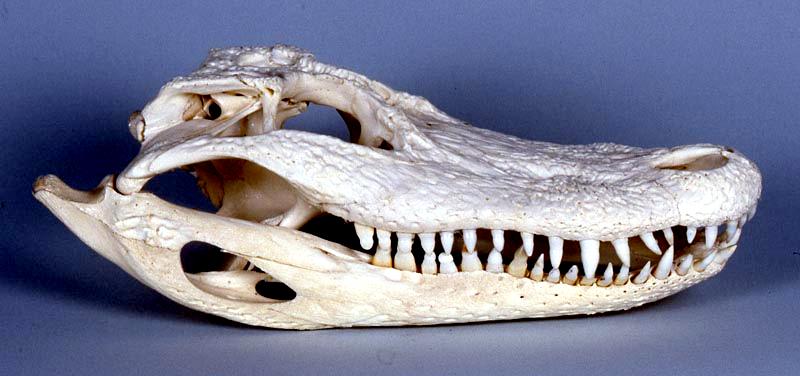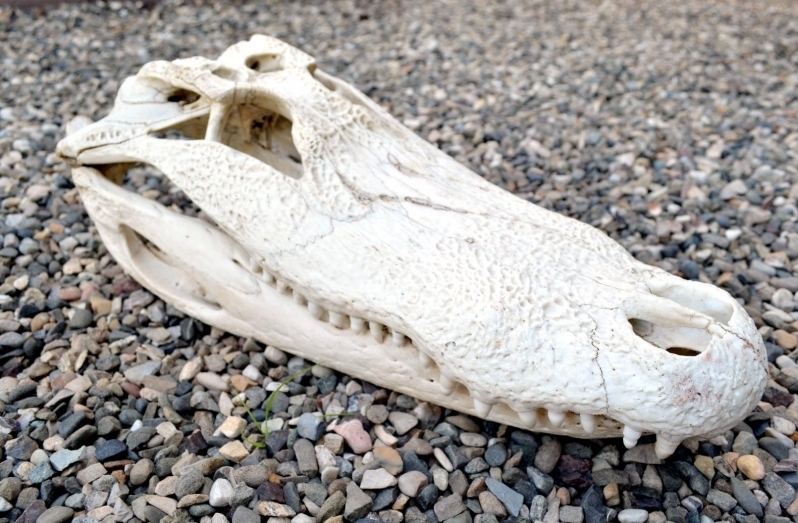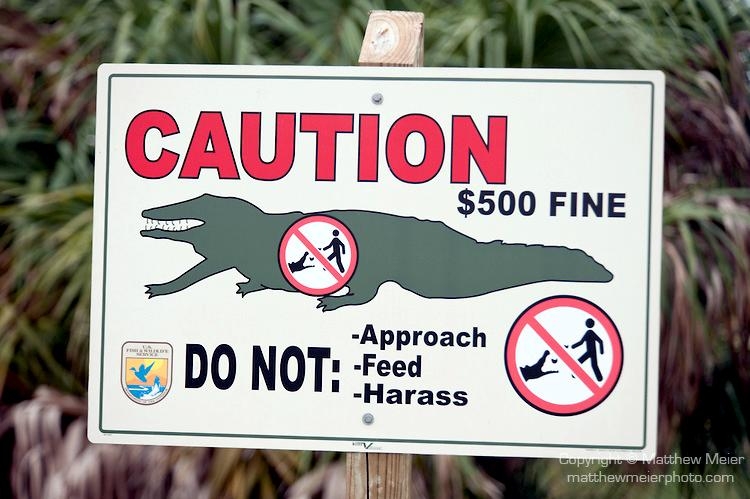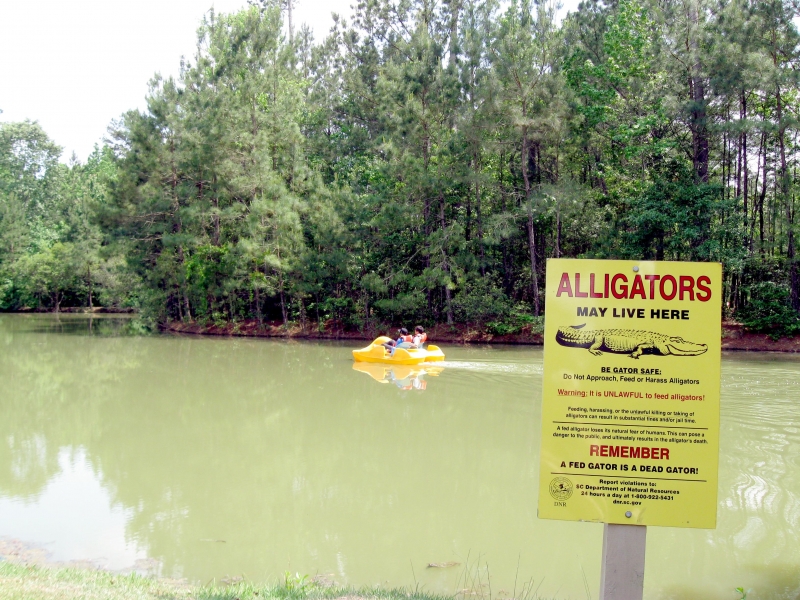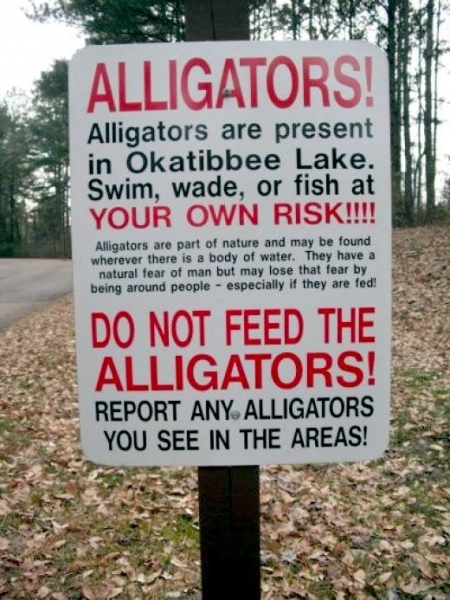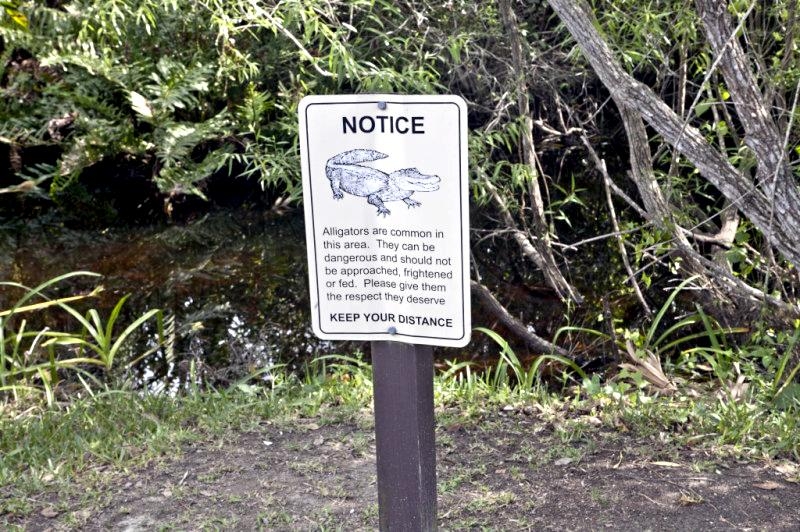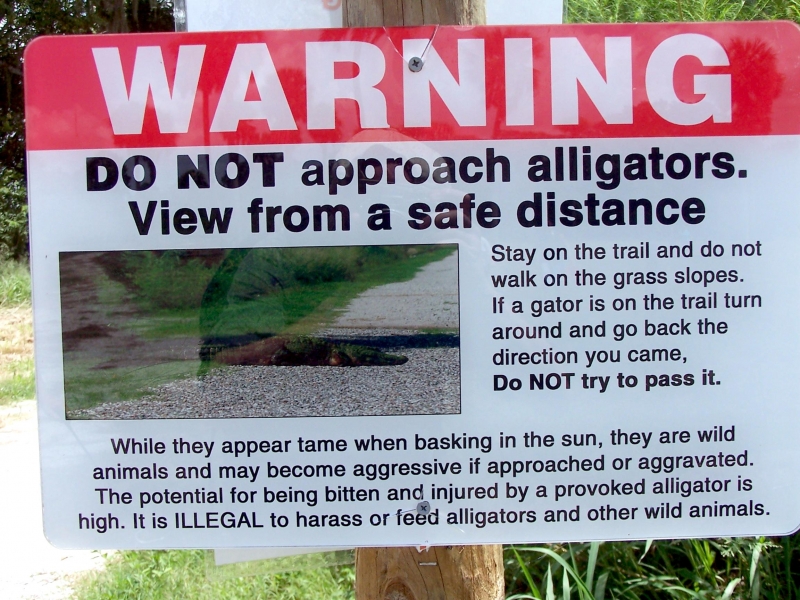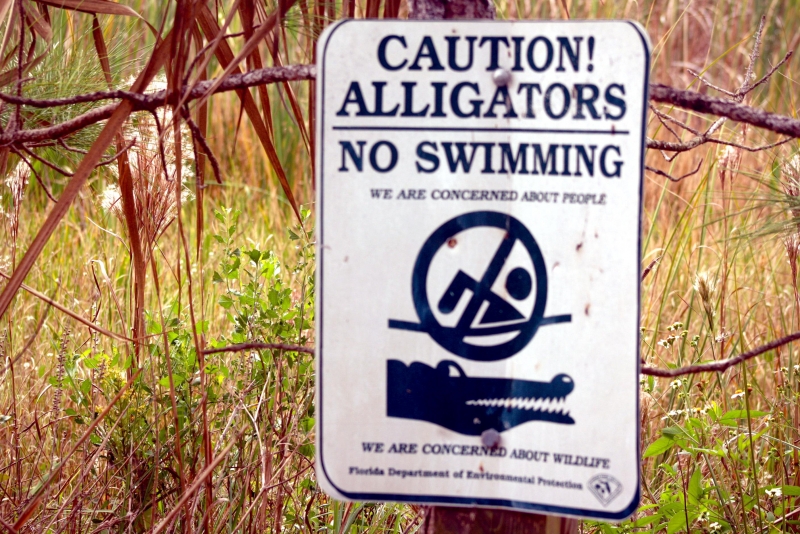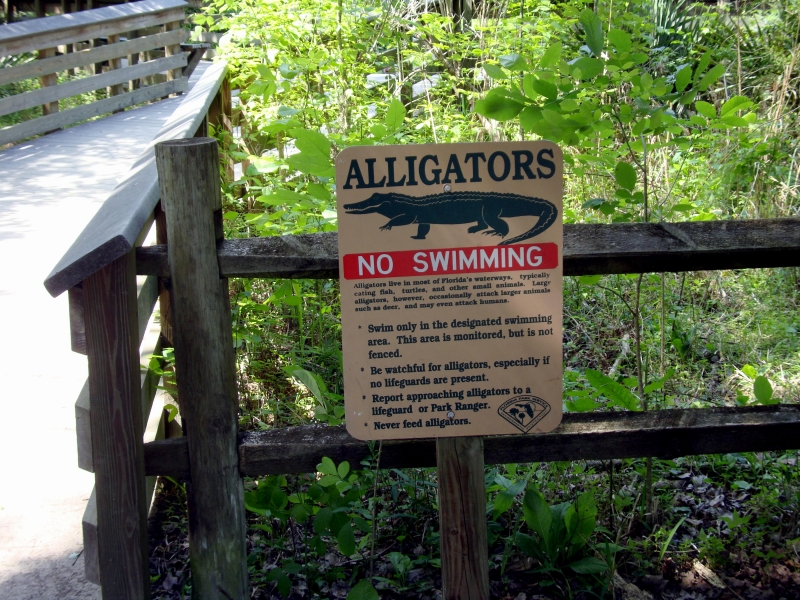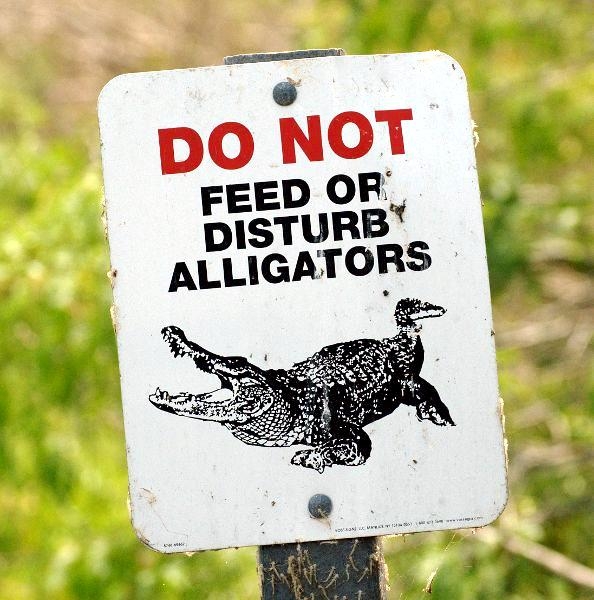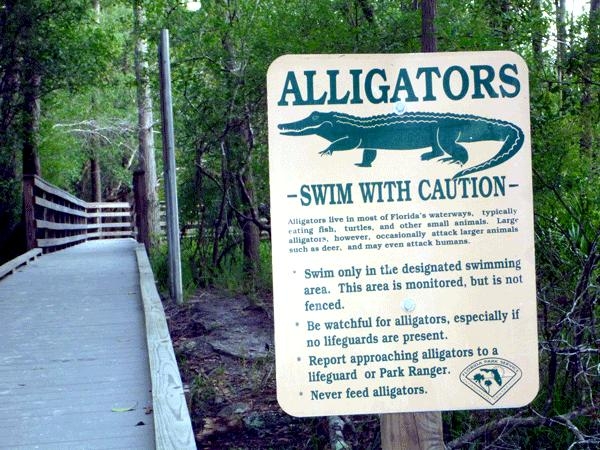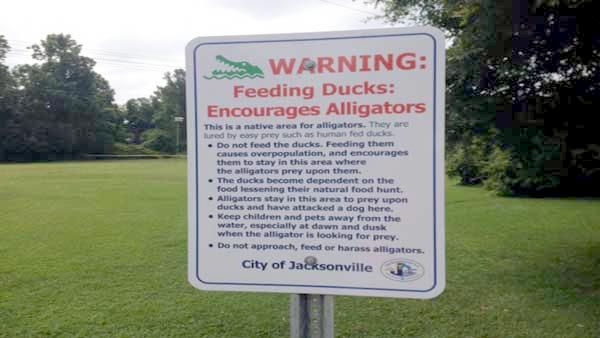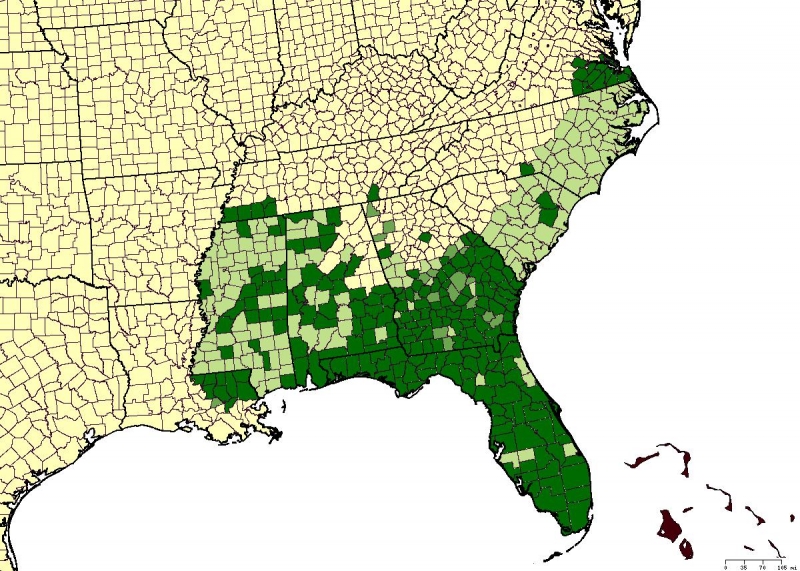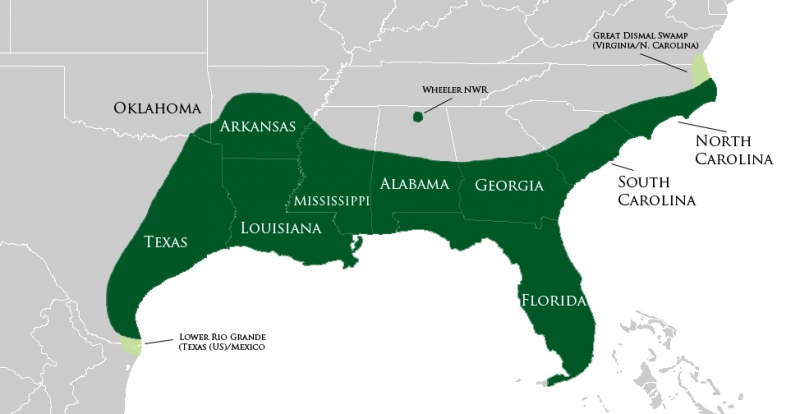“Alligator mississippiensis”
The average size for an adult female American Alligator is 8.2 feet and the average size for a male is 11.2 feet. Exceptionally large males can reach a weight of 1,000 pounds. The word “Alligator” comes from the early Spanish name “El Lagarto” meaning “the Lizard”. Both males & females have an “armored” body with a muscular flat tail. The skin on the back is armored with embedded bony plates called osteoderms or scutes. They have 4 short legs; the front legs have 5 toes while the back legs have 4 toes. Females usually remain in a small area. The males occupy areas larger than 2 square miles. Both males & females extend their ranges during the courting and breeding season. Young American Alligators remain in the area where they are hatched and where they are protected by their mother. After 2 to 3 years, they leave that area in search of food or are driven out by larger Alligators. One interesting aspect of Alligator biology is that they undergo periods of dormancy when the weather is cold. They excavate a depression called a “gator hole” along a waterway and use it during dormancy. Alligators have a long snout with upward facing nostrils at the end; this lets them breathe while the rest of the body is underwater. The young can be distinguished from adults by the bright yellow stripes on the tail; adults have dark stripes on the tail. The easiest way to distinguish an Alligator from a Crocodile is by looking at the teeth. The large fourth tooth in the lower jaw of an Alligator fits into a socket in the upper jaw and is not visible when the mouth is closed. This does not happen in Crocodiles. Alligators have between 74 and 80 teeth in their mouth at a time. As teeth wear down, they are replaced. An Alligator can go through 2,000 to 3,000 teeth in a lifetime. While American Alligators can tolerate saltwater for a few hours or even days, they are primarily freshwater animals living in swampy areas, rivers, streams, lakes and ponds.
Both males & females reach sexual maturity when they are about 6 feet (1.8 meters) long, a length attained at about 10 to 12 years. Breeding takes place during the night, in shallow waters. Males roar to attract females and to ward off other males circles. Courtship starts in April with mating occurring in early May. After mating, the female Alligator builds a nest of vegetation. The nest measures 7 to 10 feet in diameter and is 2 to 3 feet high. Then around late June and early July, the female lays 35 to 50 eggs. Some females lay up to 90 eggs. The eggs are then covered with the vegetation nest through the 65 day incubation period. The sex of the juveniles is determined by the temperature of the nest: above 93 °F all are male, below 86 °F all are female and temperatures in between will produce both sexes.
Toward the end of August, the young Alligators begin to make high-pitched noises from inside of the egg. This lets the mother know that it is time to remove the nesting material. When the American Alligator hatches, it measures about 6 to 8 inches. Newly hatched Alligators live in small groups called “pods” and 80% of young Alligators fall victim to predators like bobcats, birds, raccoons, otters, snakes, large bass and larger Alligators. Females aggressively defend their young during these first few years. American Alligators are unusual among reptiles in providing maternal care to their young. The juveniles grow about a 1 foot a year. Maturity is reached during the sixth year. Alligators may live to about 50 years in the wild. After it is 4 feet long, an Alligator is safe from predators except humans and occasionally other Alligators. Once on the verge of extinction, the American Alligator has made a remarkable recovery. Due to strict conservation measures and extensive research, it is no longer endangered except in scattered areas of its range. The greatest threat is currently destruction of habitat; this includes water management systems and increased levels of mercury and dioxins in the water. Because Alligators will feed on almost anything, they pose a mild threat to humans. In Florida where there is the greatest Alligator population, there were 9 deaths to American Alligator attacks from 1973 to 1990. Dogs and other pets are also sometimes killed.
